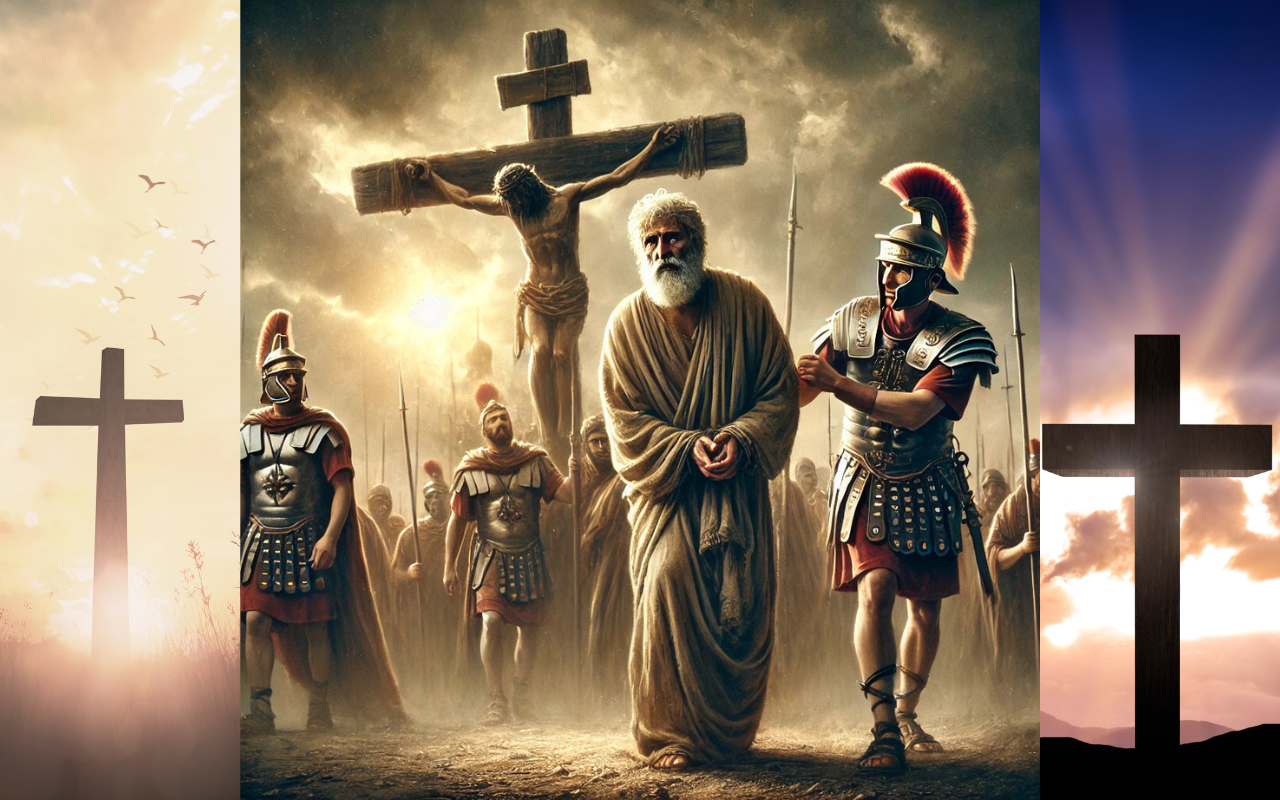
Have you ever wondered what it truly means to live—or even die—for your faith? The Apostle Peter, a cornerstone of early Christianity, faced a martyr’s death, but was he really crucified upside-down as tradition claims? And why does it even matter? In this blog and video, we’ll explore the historical and biblical evidence surrounding Peter’s death, separate fact from fiction, and uncover what his story means for us today. As someone passionate about biblical truth and Christian history, I’ll guide you through this intriguing journey. Stick with me—what we uncover might change how you see faith under pressure.
The Evidence Surrounding Peter’s Death
Scripture is clear that following Jesus isn’t easy. In Matthew 16:24, Jesus says, “If anyone would come after me, let him deny himself and take up his cross and follow me.” For Peter, this statement wasn’t just figurative—it was prophetic. Jesus foretold Peter’s death in John 21:18-19: “When you are old, you will stretch out your hands, and another will dress you and carry you where you do not want to go.” Many interpret the phrase “stretch out your hands” as a reference to crucifixion.
Peter himself acknowledged his impending martyrdom in 2 Peter 1:14, writing, “I know that the putting off of my body will be soon.” Historical evidence also supports this. Early church fathers like Clement of Rome, Tertullian, and Origen unanimously affirm Peter’s crucifixion in Rome during Emperor Nero’s persecution of Christians around AD 64. But what about the claim that Peter was crucified upside-down? This idea mainly stems from an apocryphal text called the Acts of Peter, written in the late 2nd century. It suggests that Peter requested to be crucified upside-down because he felt unworthy to die in the same manner as Jesus. While this story has inspired countless believers, historians debate its reliability.
What Do Experts Say?
Crucifixion was a brutal, humiliating form of execution. Scholars like Sean McDowell note that Roman executioners rarely took requests from their victims. Their goal was maximum pain and public humiliation, not accommodating the condemned. Being crucified upside-down might have been their decision rather than Peter’s request, as this position inflicted unique forms of suffering. However, there’s limited historical evidence to confirm this detail. While early Christian writers like Jerome and Eusebius mention Peter’s crucifixion, they don’t specify whether it was inverted. Modern researchers caution that traditions like this often evolve over time, blending fact and legend.
What Really Matters?
Whether Peter was crucified upside-down or not, one thing is certain: he died for his faith. This is where the story’s significance lies—not in the details of how he died but in why he was willing to die. Peter’s martyrdom was a fulfillment of Jesus’ prophecy and a powerful testimony of unwavering faith.
Here are two key takeaways for us as believers:
Faith Doesn’t Require All the Details.
Just as Peter didn’t know exactly how his life would end, we don’t always know the specifics of God’s plan for us. Yet, like Peter, we’re called to trust and follow Christ even in uncertainty.
Peter’s Story Points to Christ.
Peter wasn’t perfect. He doubted, denied Christ, and failed at times. But in the end, his life glorified God. The focus of Peter’s story isn’t Peter—it’s Jesus. His martyrdom reminds us that our ultimate loyalty is to Christ, no matter the cost.
Separating Truth from Tradition
It’s easy to romanticize the lives of early church leaders. Stories like Peter’s crucifixion upside-down can inspire us, but they shouldn’t be the foundation of our faith. Our hope rests in Jesus, not in the heroic acts of other believers. If Peter wasn’t crucified upside-down, does that diminish his sacrifice? Absolutely not. His faithfulness, courage, and willingness to die for Christ are what truly matter. As Christians, we’re not called to worship Peter or any other saint. Instead, we’re called to emulate their faith. Peter’s story encourages us to stand firm, even when the world opposes us. It’s a reminder that our lives—and our deaths—can glorify God.
What Can We Learn from Peter’s Death?
Peter’s martyrdom challenges us to consider how far we’re willing to go for our faith. Would we stand firm under persecution? Could we trust God even when facing death? While most of us won’t face literal martyrdom, we’re still called to “take up our cross” daily. That might mean sacrificing comfort, enduring ridicule, or making hard choices to honor Christ. Peter’s story reminds us that following Jesus is worth it—even when it costs everything.
Closing Thoughts
Peter’s death, whether upside-down or upright, stands as a testament to unwavering faith. It’s not the manner of his death but the message of his life that inspires us. Peter’s legacy isn’t about heroism—it’s about pointing to Christ. So, the next time you hear the story of Peter’s crucifixion, let it challenge you to live boldly for Jesus. After all, it’s not how we die that matters—it’s how we live for Him.
Call to Action:
What does Peter’s story mean to you? Share your thoughts in the comments below. And if you found this inspiring, don’t forget to like, share, and subscribe to our YouTube channel at (https://www.youtube.com/@PossibilityPluspm), share our videos with someone who needs encouragement today!
